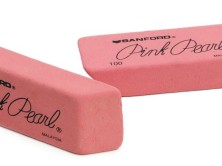
Federal judge J.Paul Oetken dismissed Peter Paul Biro's libel lawsuit against the New Yorker for its article on him. (Credit: New Yorker, screenshot)
Federal judge J. Paul Oetken dismissed Peter Paul Biro’s libel lawsuit against the New Yorker magazine over its July 2010 article about him by David Grann, the New York Times reported.
Biro filed his lawsuit two years ago, as iMediaEthics wrote, accusing the New Yorker of libeling him by questioning his work as a “forensic art expert.” Biro claimed the profile of him was “written and published with malice and an indifference to the standards of responsible journalism,” but the New Yorker defended the story.
Last year, Judge Oetken dismissed a portion of the lawsuit but did allow Biro to move forward with some of his legal claims against the article.
But in this most recent ruling, Judge Oetken dismissed the lawsuit because he said Biro didn’t prove “actual malice,” necessary since Biro is a “limited purpose public figure,” according to Courthouse News Service. The lawsuit’s dismissal also extends to claims against a few other sites that re-reported the New Yorker claims, Courthouse News Service and the New York Times reported.
In a statement about the judge’s dismissal, the New Yorker told iMediaEthics by email:
“We are delighted that the judge dismissed this meritless lawsuit against David Grann and Conde Nast. We have always maintained complete confidence in David’s meticulous reporting for his July 2010 piece, ‘The Mark of a Masterpiece.’ It is a brilliant piece of journalism and, as the Judge noted in his opinion, the article ‘appears to be the product of an enormous amount of careful and diligent research.'”
Biro told iMediaEthics by email that he plans to “appeal to the Second Circuit” and that he is “disappointed” by the ruling. Biro said:
“In his decision, Judge Oetken suggested that the application of the law here was possibly unfair to me but that, as a district judge, he was bound by precedent. Moreover, at oral argument, he said that he did not expect his decision to be the last word on the case. The decision raises many significant and novel issues, and we will seek further review.
“It is inexplicable that the judge first ruled that there were defamatory statements that were by definition grounds for suit, but then dismissed the case without ever affording me an opportunity to develop evidence to show that they had reason to doubt the accuracy of what they printed. The legal questions are uncertain, and we intend to appeal.”
Biro further stated that “there remain two defendants in the case, Theresa Franks / Global Fine Art Registry and Blouin Media.” Both are listed as being defendants on the court’s ruling, which granted the motions to dismiss the claims against the New Yorker and a few outlets that reported on the New Yorker’s story — Yale University Press, Paddy Johnson, Gawker and Business Insider. Franks is a source for the New Yorker story.
However, iMediaEthics notes that, according to the ruling, “there is no reason to believe — nor does the complaint allege — that Franks was the source for any of the four remaining defamatory passages.”
In his email to iMediaEthics, Biro added:
“We also think that the conclusion that I am a public figure, and the requirement to prove that the defendants ‘acted with actual malice’ is unreasonable and sets the bar far too high. How can one determine someone’s state of mind without discovery? To my mind, the judge missed the centre of the issue, losing sight of natural justice.”
What did the New Yorker article say?
The July 12, 2010 article reported on Biro’s “radical new approach to authenticating pictures” by finding “artist’s fingerprints” to verify the artist of paintings. The New Yorker discussed and reported at length on questions about Biro’s methods and past, reporting on “more than a dozen civil lawsuits” against Biro, “his brother, his father, or their art businesses.”
“As I sifted through the files, I found other cases that raised fundamental questions about Peter Paul Biro’s work as a restorer and an art dealer,” the New Yorker wrote. The New Yorker also reported that it had asked Biro about the “old lawsuits,” writing:
“Peter Paul said that the old lawsuits had involved relatively small amounts, and, as he later wrote in an e-mail, often stemmed from disgruntled ‘treasure seekers’ who ‘hoped to turn a thousand into ten or even into millions and then turned on us and still make nasty comments because their greed did not turn to gold.'”
Biro responded to the New Yorker’s questions asking if his father ever faked art, saying “it’s pure fantasy.” Further, Biro told the New Yorker he never faked fingerprints and challenged criticism of his work.
In one case of the New Yorker explaining how it reported, it said that Biro denied the possibility that he had created a stamp to get a fingerprint from Jackson Pollock’s studio because he was only there for a “few hours” not giving him enough time. However, the New Yorker said the studio denies Biro’s claim and that he was there four times “for hours.”
Is Biro a Public Figure?
The New Yorker’s publisher had filed a motion to label Biro a public figure, according to the judge’s recent ruling. While Biro claimed he was not a public figure, the judge said because Biro is a “leading authority in [the] emerging field [of art authentication,]” he is, Courthouse News Service explained.
“The very purpose of writing in scientific journals, lecturing at universities and opining in news shows and documentaries is to influence public discourse. Indeed, Biro’s articles themselves bespeak an unequivocal desire to alter the public discourse about art authentication,” Oetken’s decision said.
Was there Actual Malice?
Judge Oetken’s ruling listed a few ways a claimant could show actual malice, such as publishing a fake story or comment, reporting “based wholly on an unverified, anonymous source,” knowingly publishing inaccurate information and deliberately not correcting bad information.
Oetken cited the New Yorker‘s well-known practice of fact checking coupled with the article in question being “on its face…an even-handed product of an extensive degree of research,” it was less likely that there was actual malice.
According to the ruling, the judge found “four of the roughly two dozen passages” that the New Yorker published “stated a claim for defamation under New York law.”
The judge had previously ruled that “there is little question that a reader may walk away from the Article with a negative impression of Biro, but that impression would be largely the statements of fact that Biro does not allege to be false,” the ruling noted. But, Oetken noted that “the mere raising of questions is, without more, insufficient to sustain a defamation suit in these circumstances.”
The judge went on to highlight the attempts the New Yorker made to bring the accusations against Biro to him for a response:
“Not only has Biro failed to provide factual allegations rendering it plausible that the New Yorker Defendants acted with actual malice, but there is evidence in the record suggesting that it is implausible that they acted with the requisite intent.”
Further, Judge Oetken noted that the New Yorker featured heavily its “interviews of Biro and pressing him for answers [and] … Biro’s response to nearly every suspicion raised by the article.”






Comments Terms and Conditions